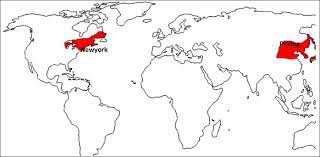The Laurentian climate is a subarctic climate that is prevalent in the eastern regions of North America, including parts of Canada and the United States. This type of climate is characterized by long, cold winters and short, cool summers, with low levels of precipitation throughout the year.

Table of Contents
Temperature and Seasons
The Laurentian climate is characterized by long, cold winters, with average temperatures ranging from -10°C to -18°C and short, cool summers, with average temperatures ranging from 12°C to 18°C. The spring and autumn months are relatively short, with temperatures ranging from 0°C to 10°C. The region experiences low temperatures for much of the year, with occasional warm spells in the summer months.
Precipitation in Laurentian Climate
It is relatively dry throughout the year, with precipitation ranging from 400 mm to 900 mm annually. The majority of precipitation falls as snow during the winter months, which contributes to the heavy snowfalls that are characteristic of the region. The summer months are relatively dry, with occasional thunderstorms bringing brief periods of rainfall.
Impact of Laurentian Climate on Life in the Region
The Laurentian climate has a significant impact on life in the region, from the clothes people wear to the activities they participate in. The long, cold winters make warm clothing and indoor activities essential for survival. The region is known for its winter sports, such as skiing, snowboarding, and ice hockey, which take advantage of the heavy snowfalls and frozen lakes and rivers.
The dry climate can pose challenges for agriculture, with the region being better suited for livestock farming and forestry. The region is also home to a diverse range of wildlife, including moose, deer, and black bears, which have adapted to the harsh climate.
Conclusion
In conclusion, the Laurentian climate is a subarctic climate that is characterized by long, cold winters, short, cool summers, and low levels of precipitation throughout the year. While this climate can pose challenges, such as the need for warm clothing and limited agricultural opportunities, it also provides opportunities for winter sports and the preservation of diverse wildlife. Understanding the Laurentian climate is essential for anyone living in or visiting the region, as it can impact daily life and activities.
Important Links